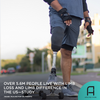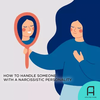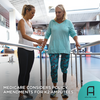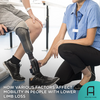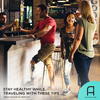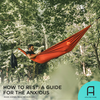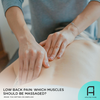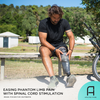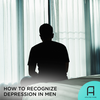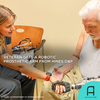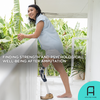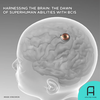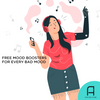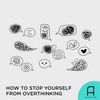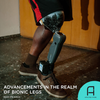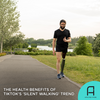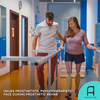How to Improve Postural Control and Balance in People With Traumatic Below-Knee Amputation
Postural control, or maintaining proper body alignment, is crucial for performing daily activities and preventing falls. Unfortunately, people with below-knee limb loss struggle with postural control and balance due to the loss of sensory feedback and muscle control in the residual limb, as well as the limited range of motion of the prosthetic foot.

As a result, individuals with below-knee limb loss tend to rely on their sound side leg and use their prosthetic leg less while standing and walking. However, this adaptation can result in altered biomechanics of the intact leg, pelvis, and trunk, which increases the risk of pain symptoms and overuse musculoskeletal injury, ultimately restricting functional mobility.
To address this issue and improve patient outcomes, researchers sought to gain a better understanding of this phenomenon.
The study
The researchers studied 18 individuals with traumatic below-knee amputations who had at least six months of daily use of a prosthetic limb. The participants are also classified as K-level 3 or 4.
The researchers performed a computerized dynamic posturography, evaluating the participants’ automatic and intentional reactions. They also performed a Limits of Stability test to assess the participants’ ability to shift their center of gravity.
The study confirmed that participants with traumatic below-knee amputations used their prosthetic legs less for both automatic and intentional postural tasks. However, this strategy might result in impaired balance or musculoskeletal injury, which affects an individual’s functional mobility.
Factors that improve postural control and balance
The study also found a few factors that could help improve postural control and balance in individuals with traumatic below-knee limb loss.
The first is to prolong prosthetic leg use. Researchers found that the longer a person uses a prosthetic leg, the better the weight-bearing becomes on the prosthesis. This, in turn, leads to overall improved usage of the prosthetic side.
The study suggests that this finding could be due to adaptive mechanisms like central reorganization processes, which progress over time as experience and practice increase. Therefore, daily use of the prosthesis and rehabilitation are crucial for individuals with below-knee limb loss, even for experienced prosthesis users.
The second factor is the ideal residual limb length, which ranges from 12.5 to 17.5 cm. The study found that individuals with longer residual limbs tend to have more asymmetrical weight-bearing postures and prefer to use their intact legs. Interestingly, this finding contradicts previous studies that suggested a longer residual limb could improve standing and walking ability as well as functional mobility.
The bottom line
Maintaining good balance and posture is essential for carrying out daily activities without experiencing pain or injury. This study has revealed that individuals who have below-knee limb loss due to trauma tend to rely more on their intact leg, resulting in severe asymmetrical posture. This can increase the risk of developing chronic pain and injury.
The good news is that postural control can be improved through increased use of prosthetic limbs and undergoing rehabilitation. This can benefit both new and experienced prosthesis users.
Another effective way of improving postural control is having the ideal residual limb length, which typically ranges from 12.5 to 17.5 cm. Individuals with longer residual limbs tend to favor their intact leg, which can further aggravate postural asymmetry.





























